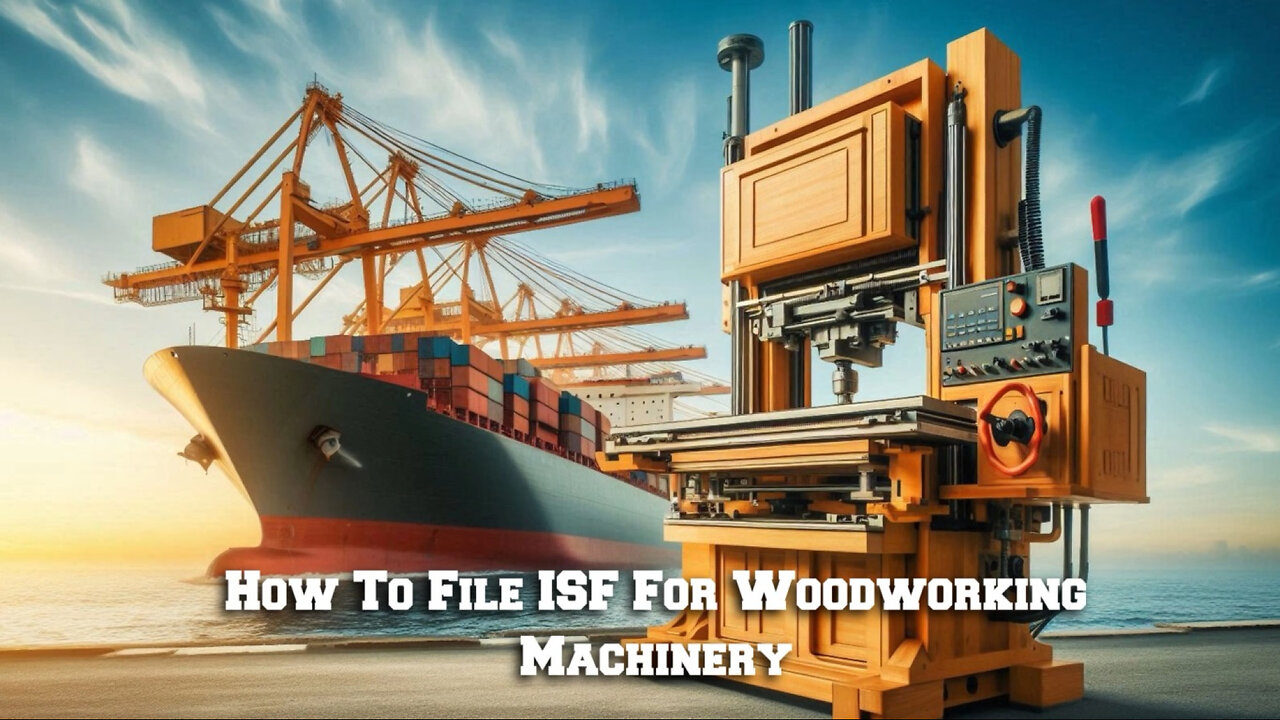Premium Only Content

Mastering the ISF: Essential Steps for Importing Woodworking Machinery
ISF Cargo | Phone: 786-865-0459
Email: isf@isfcargo.com | https://isfcargo.com
This response provides a step-by-step guide on filing an Importer Security Filing (ISF) for woodworking machinery. It highlights the importance of accurately completing the ISF form, obtaining an ISF bond, working with a licensed customs broker, monitoring the shipment's movement, and ensuring compliance with all customs regulations. By following these guidelines, importers can ensure a smooth importation process and mitigate the risk of delays and penalties.
When filing an Importer Security Filing (ISF) for woodworking machinery, there are several important steps that need to be followed. Firstly, it is crucial to gather all the necessary information about the shipment, including the shipper's information, consignee's information, manufacturer's information, bill of lading number, and other relevant details. This information will be required for filling out the ISF form accurately.
Once all the necessary information is gathered, the next step is to complete the ISF form. The ISF form is a comprehensive document that requires detailed information about the imported goods. It is important to ensure that all the required fields are accurately filled out, as any errors could lead to delays in customs clearance or penalties.
Obtaining an ISF bond is another crucial step in the process. An ISF bond acts as financial protection and guarantees compliance with CBP regulations. Importers are required to obtain an ISF bond, so it is important to pursue this step.
Working with a licensed customs broker is highly recommended when filing an ISF for woodworking machinery. Customs brokers are experts in customs regulations and can assist importers in accurately and timely filing the ISF. They can also provide guidance on any additional requirements specific to woodworking machinery, ensuring compliance.
Monitoring the movement of the shipment is essential to stay updated with its status and ensure it arrives at the designated port of entry as planned. This information will help in planning logistics and ensuring timely delivery.
Lastly, importers must ensure compliance with all customs regulations. The CBP conducts random inspections to verify the accuracy of the ISF and detect any potential security risks. By complying with all regulations, importers can mitigate the risk of delays, penalties, and even seizure of their goods.
In conclusion, filing an ISF for woodworking machinery requires careful attention to detail and adherence to specific steps. By following the guidelines outlined in this response, importers can navigate through the process smoothly and ensure a successful importation. Working with a licensed customs broker is highly recommended to streamline the process and ensure compliance with all customs regulations.
#usimportbond #isfcustomsbroker #uscustomsclearing #isfentry
Video Disclaimer Here: This content is for educational use and not associated with any US government body.
00:36 - Introduction to Importer Security Filing (ISF)
01:00 - Steps for Filing ISF
01:50 - Working with Customs Brokers
02:10 - Monitoring Compliance and Shipment
-
 LIVE
LIVE
MattMorseTV
3 hours ago $7.06 earned🔴Trump's meeting with Zelenskyy - LIVE🔴
1,896 watching -
 29:09
29:09
The White House
2 hours agoPresident Trump Participates in a Bilateral Meeting with the President of Ukraine
119 -
 LIVE
LIVE
Tucker Carlson
2 hours agoAuron MacIntyre: The American Empire Is Racing Towards Collapse. Here’s How to Prevent It.
3,552 watching -
 DVR
DVR
Mark Kaye
2 hours ago🔴 Trump and Zelenskyy Plan Oval Office Rematch!
1.66K2 -

Sean Unpaved
1 hour agoBehind the Snap: Unpacking Giants' QB, Saints & Browns Battles, Caleb's Climb, & Cowboys' Plan B
4.62K -
 LIVE
LIVE
Barry Cunningham
5 hours agoBREAKING NEWS: PRESIDENT TRUMP MEETS WITH ZELENSKY AND OTHER WORLD LEADERS!
2,327 watching -
 LIVE
LIVE
StoneMountain64
1 hour agoBattlefield 6 Roundup, and NEW MAP for Battlefield 2042 on the Road to BF6
66 watching -
 LIVE
LIVE
Nerdrotic
4 hours ago $1.25 earnedSuperman GUNNED DOWN | Marvel Phase SUX - Nerdrotic Birthday Nooner 508
699 watching -
 18:52
18:52
Neil McCoy-Ward
1 hour agoBrace Yourself… They’re Coming for Everything You’ve Got!
886 -
 LIVE
LIVE
Viss
2 hours ago🔴LIVE - Learn To Dominate Battle Royale with Tactics and Strategy! - PUBG
83 watching